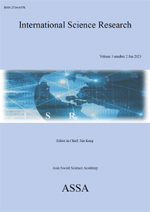The Media Literacy of Residents in Southwestern China During the COVID-19 Epidemic
The Media Literacy of Residents in Southwestern China During the COVID-19 Epidemic
- 아시아사회과학학회
- International Science Research
- Vol.3 No.2
-
2023.0618 - 30 (13 pages)
-
DOI : 10.51600/isr.2023.3.2.18
- 142

Objective To measure residents’ abilities to acquire, analyze and evaluate information on media in southwestern China and to explore its predictive factors. Methods The convenience sampling method was used. A web-based questionnaire survey was conducted among 774 residents during the Spring Festival in 2020. Results Young, highly educated, unmarried, high-income, and urban residents preferred to seek and acquire information about COVID-19 epidemic through new media channels. Elderly residents tended to obtain information through television. Residents with low educational background and rural residents were more dependent on community information media. To analyze residents’ abilities in the judgement of 15 statements about COVID-19, residents with a master’s degree or above (OR = 2.755, [95% CI 1.160-6.542]) had better media literacy in identifying false health information released on social networking. Rural residents (OR = 0.609, [95% CI 0.433-0.855]) had lower media literacy. The total score decreased by 2.6% for every one-year increase of age. Conclusion Residents’ abilities to acquire, analyze and evaluate information were affected by their demographic characteristics in southwestern China. The authorities and local communities should develop different approaches of information dissemination, with the help of traditional and new media. It is important to improve the level of residents' media literacy, in order to achieve better effect in information dissemination and reception.
1. Introduction
2. Methods
3. Results
4. Discussion
5. Limitations of the study
6. Conclusion
References
(0)
(0)